- 翰林提供学术活动、国际课程、科研项目一站式留学背景提升服务!
- 400 888 0080
Edexcel IGCSE Physics: Double Science 复习笔记: 3.2.2 Reflection & Refraction
Reflection & Refraction
- All waves, whether transverse or longitudinal, can be reflected and refracted
- Reflection occurs when:
A wave hits a boundary between two media and does not pass through, but instead stays in the original medium
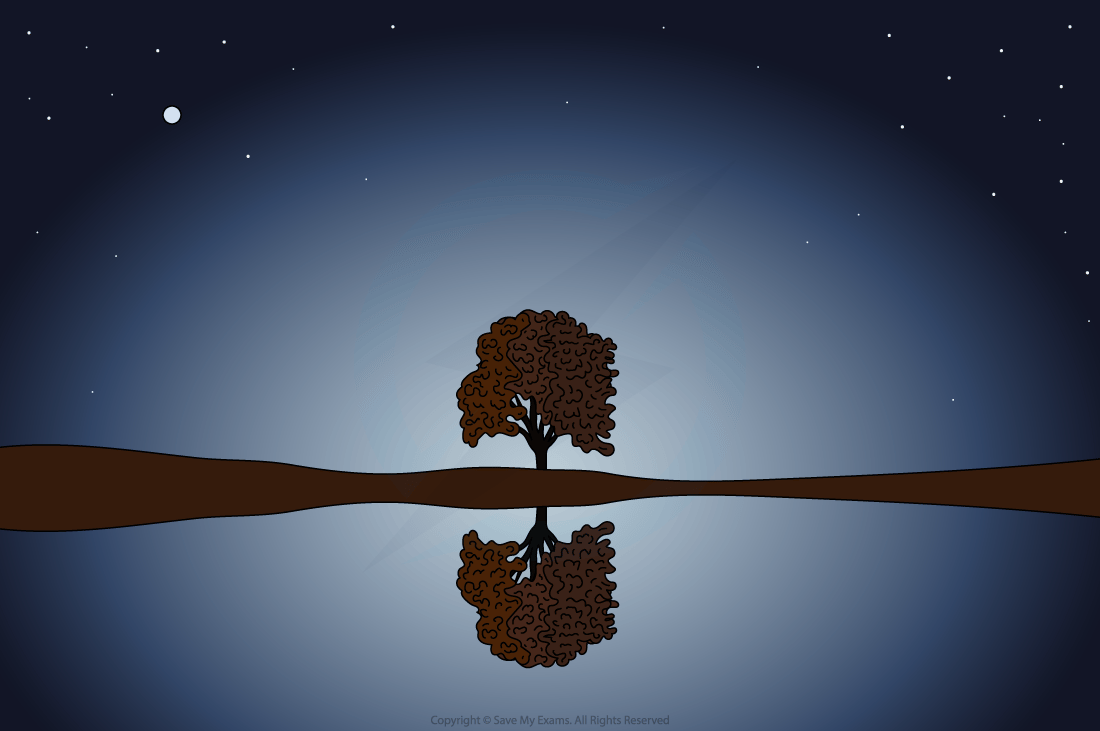
An identical image of the tree is seen in the water due to reflection
- Refraction occurs when:
A wave passes a boundary between two different transparent media and undergoes a change in direction

Waves can change direction when moving between materials with different densities
The Law of Reflection
- Angles are measured between the wave direction (ray) and a line at 90 degrees to the boundary
- The angle of the wave approaching the boundary is called the angle of incidence (i)
- The angle of the wave leaving the boundary is called the angle of reflection (r)
- The angles are the same, so the law of reflection can be written:
Angle of incidence (i) = Angle of reflection (r)
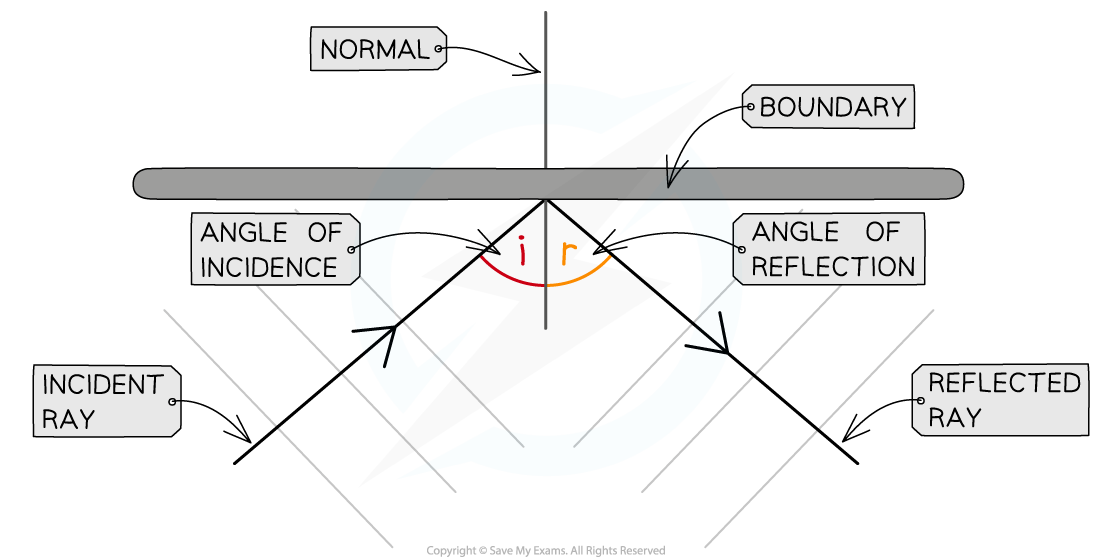
Angle of incidence and angle of reflection
Ray Diagrams
Reflection Ray Diagrams
- Angles are measured between the wave direction (ray) and a line at 90 degrees to the boundary
- The angle of the wave approaching the boundary is called the angle of incidence (i)
- The angle of the wave leaving the boundary is called the angle of reflection (r)
- The law of reflection states that these angles are the same
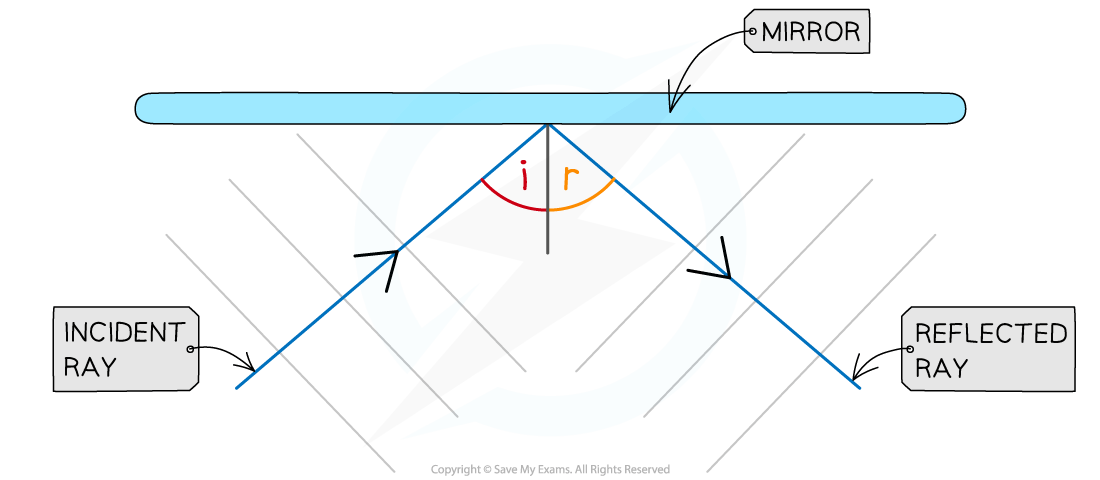
Ray diagram of reflection of a wave at a mirror
- When drawing a ray diagram an arrow is used to show the direction the wave is travelling
- An incident ray has an arrow pointing towards the boundary
- A reflected ray has an arrow pointing away from the boundary
- The angles of incidence and reflection are usually labelled i and r respectively and measured from the normal
Refraction Ray Diagrams
- Refraction occurs when light passes a boundary between two different transparent media
- At the boundary, the rays of light undergo a change in direction
- The direction is taken as the angle from a hypothetical line called the normal
- This line is perpendicular to the surface of the boundaries and is usually represented by a straight dashed or dotted line
- The change in direction depends on the difference in density between the two media:
- From less dense to more dense (e.g air to glass), light bends towards the normal
- From more dense to less dense (e.g. glass to air), light bends away from the normal
- When passing along the normal (perpendicular) the light does not bend at all
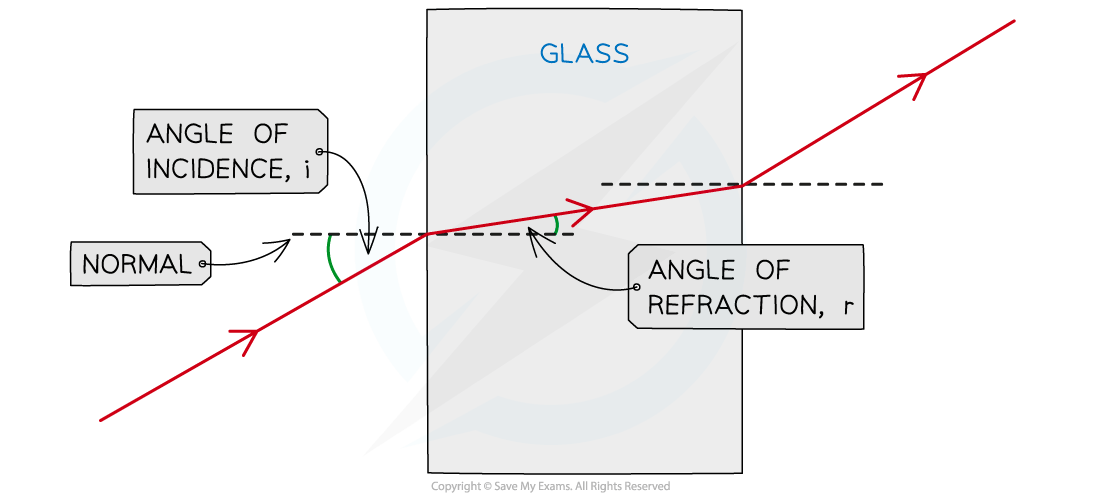
How to construct a ray diagram showing the refraction of light as it passes through a rectangular block
- The change in direction occurs due to the change in speed when travelling in different substances
- When light passes into a denser substance the rays will slow down, hence they bend towards the normal
- The only properties that change during refraction are speed and wavelength – the frequency of waves does not change
- Different frequencies account for different colours of light (red has a low frequency, whilst blue has a high frequency)
- When light refracts, it does not change colour (think of a pencil in a glass of water), therefore, the frequency does not change
Worked Example
Two parallel rays of light entering and passing through prism A and prism C.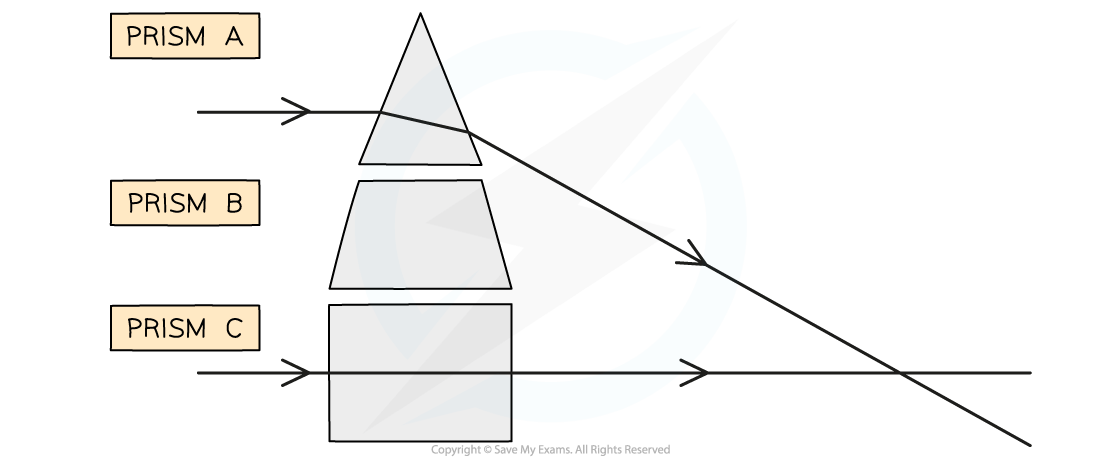 Draw a third parallel ray entering and passing through prism B.
Draw a third parallel ray entering and passing through prism B.
Step 1: Draw a parallel ray on the left
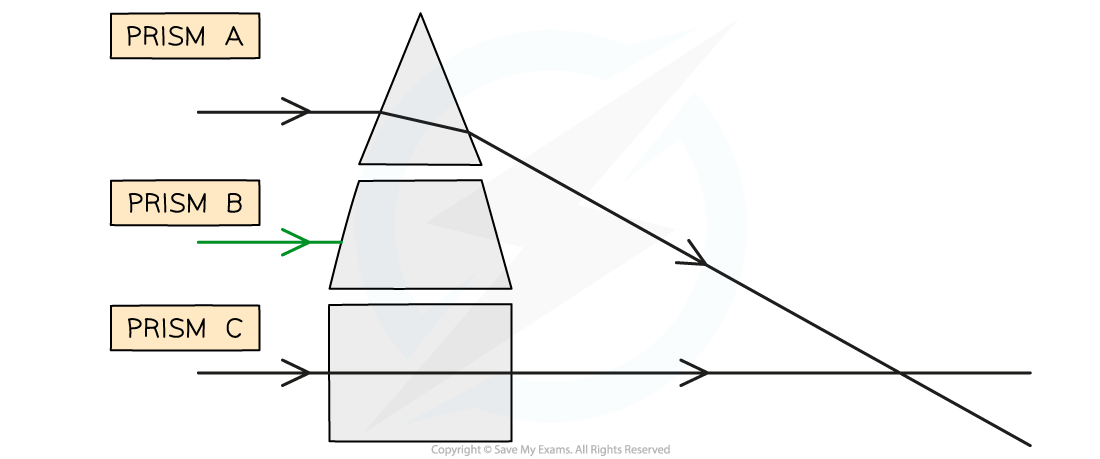
Step 2: Draw the refracted ray at the first surface

-
- As the ray enters the block it bends towards the normal since it is going into a denser material
- In this case, the angle of refraction is smaller than the angle of incidence
Step 3: Draw the refracted ray at the second surface
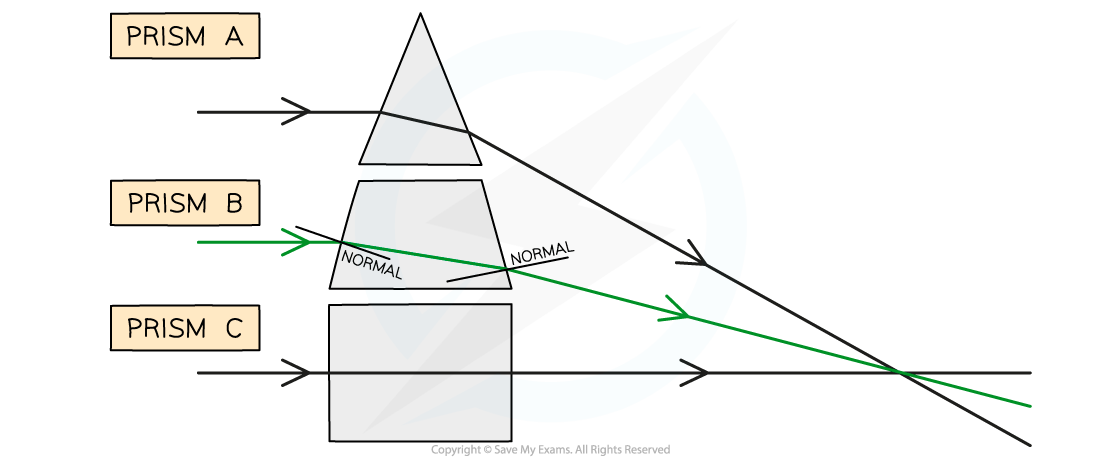
-
- As the ray leaves the block it bends away from the normal
- In this case, the angle of refraction is larger than the angle of incidence
Exam Tip
When drawing ray diagrams for reflection:
- A simple straight line with an arrow is enough to represent the wave
- You do not need to draw the wavefronts unless asked to do so!
- Take care to draw the angle correctly
- If it is slightly out it won’t be a problem, but if there is an obvious difference between the angle of incidence and the angle of reflection then you will probably lose a mark!
Practice drawing refraction diagrams as much as you can! It's very important to remember which way the light bends when it crosses a boundary:
As the light enters the block it bends towards the normal line
Remember: Enters Towards
When it leaves the block it bends away from the normal line
Remember: Leaves Away
Don't forget to draw the arrows for the direction of the light rays and make sure they are drawn with a ruler and a sharp pointed pencil


最新发布
© 2025. All Rights Reserved. 沪ICP备2023009024号-1








